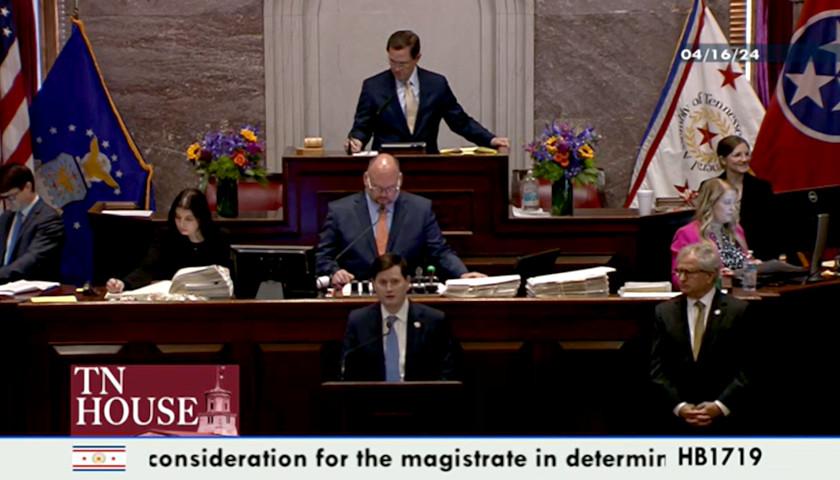While all eyes are on Wisconsin’s crucial Supreme Court election, the April 4 ballot also includes an important question asking voters to amend the state’s constitution.
The constitutional amendment proposes to reform a bail system that most agree is broken, although there’s argument on how to fix it. State Senator Van Wanggaard (R-Racine) and State Representative Cindi Duchow (R-Delafield), authors of the legislation, offer answers to many of the most frequently asked questions surrounding their proposed amendment.
What does the proposed constitutional amendment do?
- The proposed constitutional amendment updates Wisconsin’s constitutional restrictions on bail to put them more in line with the rest of the country. The proposed amendment is actually two separate questions.
Why two questions?
- The proposed constitutional amendment makes two changes, one related to non-monetary conditions of release and one related to cash bail (monetary condition of release.) Each question relates to a different part of the proposed amendment.
What does Question #1 do?
- Question #1 gives judges more flexibility to place restrictions on a defendant pre-trial.
- Under the current constitution, judges can only place restrictions on defendants to prevent “serious bodily harm.” Serious bodily harm is a legal term meaning an injury that creates a “substantial risk of death.”
- If Question #1 is adopted, a judge will be able to places restrictions on defendants to prevent “serious harm”. Serious harm is a new legal term that is expected to be approved by the Legislature this week in Assembly Bill 54 or Senate Bill 75. (See more information below)
Why is Question #1 necessary?
-
- Because of the “serious bodily harm” standard adopted in the Wisconsin Constitution in 1981, a judges hands are tied when trying to protect the public.
- For example, a judge cannot prohibit an accused sex offender of children from going to a playground or a school, because there is unlikely to be an injury with “substantial risk of death.”
What does Question #2 do?
- Question #2 gives judges more, flexibility when determining the amount of cash bail (“monetary condition of release) required for violent crimes.
- Under the current constitution, a judge may only consider the likelihood of a defendant returning to trial and seek to prevent the intimidation of witnesses when setting a cash bail amount./li>
- If Question #2 is adopted, a judge will be able to consider the “totality of the circumstances” including previous convictions for violent crimes, the need to protect the community from serious harm, the probability that a defendant will return to court, and potential affirmative defenses of the defendant (e.g. self-defense).
Why is Question #2 necessary?
- Wisconsin is the only state that limits a judge to a single factor, flight risk, when setting cash bail. If a defendant has a lengthy criminal history, or is likely to cause harm to another person that cannot be considered when setting cash bail and is irrelevant.
- A three-time felon could say in court “I’m going to break your leg” or “I’m going to rob a bank when I get out of here.” A judge would be unable to consider those statements when setting cash bail.
What happens if only one question is approved by voters?
- If only one question is approved, then only that part of the constitutional amendment is ratified.
- If voters approve Question #1 but not Question #2, then judges will have more flexibility to set non-monetary conditions of release, but will be only be able to consider flight risk when setting cash bail for people accused of violent crimes.
- If voters approve Question #2 but not Question #1, judges will be able to consider the “totality of the circumstances” when setting cash bail for violent offenses, but will be only be able to prevent injuries that cause a “substantial risk of death” when setting conditions of release.
What does “Serious Harm” mean?
- Although the term “serious harm” is used in Wisconsin statutes, it is currently undefined.
- Under Assembly Bill 54 and Senate Bill 75 (which are anticipated to pass the legislature the week beginning March 19, 2023), serious harm is defined as:
“Personal physical pain or injury, illness any impairment of physical condition or death, including mental anguish or emotional harm attendant to the personal physical pain or injury, illness or death;” or damage to property or economic loss over $2,500 in value.
How was the definition of “serious harm” created?
- Authors Representative Cindi Duchow (R-Delafield) and Senator Van Wanggaard (R-Racine) developed the definition of “serious harm” by evaluating the many existing statutory definitions of “harm,” “mental harm,” “bodily harm,” “grievous bodily harm,” “substantial bodily harm,” “great bodily harm,” and “serious bodily harm,” and found the right balance. The dollar amounts in the definition are tied to the current amounts for felonies, $2,500.
– – –
M.D. Kittle is the National Political Editor for The Star News Network.
Photo “Bail Bonds” by Daniel Schwen. CC BY-SA 4.0.








